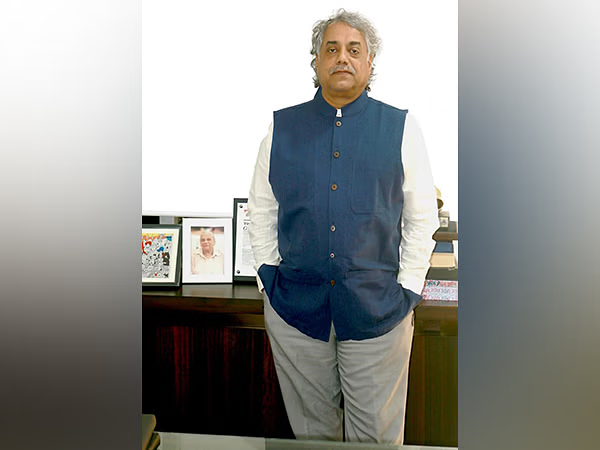News
Revival Signs


After an eminently forgettable run, the realty sector is poised at an interesting juncture even as the future looks bright propped by a positive Government mindset and big- ticket announcements in Union Budget 2014
There is hope around the corner of a revival in the Indian real estate market. The sense of a stable market in the country on account of a newly-elected government, positive expectations from recent monetary measures to check inflation and spur growth, and positive expectations from the Union Budget 2014-15 has set in the recovery and revival of the property market in the country.
While the sector has been going through a turbulent time, the future of real estate sector looks bright.
During the second quarter, between the period April to June this year, market has shown growth signals.
The sector currently has been facing a number of challenges. High retail inflation, high interest rates and a continuous fall in the rupee value, have been slowing the overall growth and have continuously hindered the investment sentiment in the market during the entire 2013 and first quarter this year. The overall economic climate, coupled with inflation and high interest rates, has kept buyers at bay.
However, there is a sense of stability and revival within the market on account of some of the positive measures announced in the recent Union Budget for the real estate sector. The industry was expecting such announcements from the Government. Most prominent among the announcements are the creation of 100 smart cities, allocation of funds for boosting rural housing and infrastructure, and incentivising real estate investment trusts (REITs). REITs specifically will prove to be an effective tool for enhancing investments into the commercial real estate.
Investors too appear to be sensing the opening up of significant opportunities on the back of a more positive growth environment which is being underpinned by the prospect of a more stable period of governance of the economy.
There is a sense of stability and revival within the market on account of some of the positive measures announced in the recent Union Budget for the real estate sector
• High retail inflation, high interest rates and a continuous fall in the rupee value, have been slowing the overall growth and have continuously hindered the investment sentiment in the market during the entire 2013 and first quarter this year
• While capital values across commercial real estate are expected to rise in the next 12 months, rental rates in the office segment are expected to be the strongest as compared to other segments such as retail and industrial segments according to the latest RICS Commercial Survey for the second quarter (April-June) of2014
• While occupiers have been actively searching for office spaces, there is a trend of small and medium sized offices
• On the residential front, there is cautious optimism. The sluggish trend in the Indian real estate market has continued over the last two years as customers have held on to their purchase decisions as they wait for property prices and interest rates to cool off
CURRENT STATUS
There are signs of recovery within the commercial real estate. While capital values across commercial real estate are expected to rise in the next 12 months, rental rates in the office segment are expected to be the strongest as compared to other segments such as retail and industrial segments according to the latest RICS Commercial Survey for the second quarter (April June),of 2014.
According to survey results, driven by office and retail sectors, occupier demand grew during the April to June period of the year. Growth in occupier demand and three-month rent expectations continue to be strongest in the office sector although there has been a noticeable pick-up in the retail data in the Q2 survey results.
The second quarter has witnessed improved transactions in the office market on the back of increased occupier activity. Almost all markets barring a few witnessed increased momentum in transactions. According to market estimates, among all the big metro cities, a significant portion of the activity was seen in Bengaluru, Delhi-NCR and Pune.
While occupiers have been actively searching for office spaces, there is a trend of small and medium-sized offices. And during the second quarter, most of the transaction enquiries came for small and medium sized offices. In addition to this there were a few big ticket transactions too. Sectors such as the IT/ITeS, banking/financial services, manufacturing and pharmaceuticals continued to drive demand for office space across prime markets.
As there is a pick-up in transactions,it is likely that the supply side will continue to remain strong. According to market indicators, a healthy supply has come into the market with Bangalore leading the supply market. As a result, the gap between the occupier demand and availability has narrowed.
On the residential front, there is cautious optimism. The sluggish trend in the Indian real estate market has continued over the last two years as customers have held on to their purchase decisions as they wait for property prices and interest rates to cool off.
• A total number of 22,290 dwelling units were launched between April and May in the seven key Indian real estate markets of the Mumbai Metro-politan Region, the National Capital Region, Bengaluru, Chennai, Hyderabad, Kolkata and Pune, 69 per cent lower than in the January-March period of the current year
• Industry should focus on bringing more affordable housing and execute the construction of projects at a fast pace. The two measures have the potential to effectively bring down the rates of housing and increase the housing supply in the country
While there are signs of revival, development firms have been slow in launches. According to data available with real estate analytics and research firm PropEquity Analytics, a total number of 22,290 dwelling units were launched between April and May in the seven key Indian real estate markets of the Mumbai Metropolitan Region, the National Capital Region, Bangaluru, Chennai, Hyderabad, Kolkata and Pune, 69 per cent lower than in the January-March period of the current year. This is the lowest quantum of new launches since January-March2012.
While the launches have reduced in number, developers have been holding on to their rates. As a consequence, the decline in number of launches will help property owners to firm up their rents and also help new sellers in the resale market to demand more in capital value terms.
It has been observed that project delays and lesser number of cheaper homes are a cause of problems in the housing sector. Prices have to come down to meet the rising demand. Therefore, industry should focus on bringing more affordable housing and execute the construction of projects at a fast pace. The two measures have the potential to effectively bring down the rates of housing and increase the housing supply in the country.
Affordable housing segment is likely to become a favoured development space with the recent announcements of the Reserve Bank of India. The apex bank has announced that small value home loans up to 50 lakh in metros and loans up to 40 lakh in other centres would be considered as affordable housing. This will entitle banks to float infrastructure bonds up to seven years. This would mean tax exemptions under priority sector lending. The infrastructure status to affordable housing projects would make it easier for developers to get finance.
The activities within the next six to eight months will show where the market is headed. While the mood of investors remains upbeat, they are cautious. Overall the market is expected to fare better in the coming quarters.
> The writer is Managing Director, RICS South Asia <
-



 News4 weeks ago
News4 weeks agoKW Delhi 6 Mall Onboards New Brands
-



 News4 weeks ago
News4 weeks agoManasum Senior Living Launches IKIGAI GOA, A Senior Living Community in North Goa, in collaboration with Prescon Homes
-



 News4 weeks ago
News4 weeks agoBridging India Divide: Top 5 Tier- 2 Cities to Focus On
-



 News4 weeks ago
News4 weeks agoCommercial Realty Gets Tech Savvy: Fast Construction, Enhanced Convenience
-



 News3 weeks ago
News3 weeks agoGodrej Properties Sells Rs 3k cr+ Homes of Godrej Zenith, Gurugram, within 3 days
-



 News4 weeks ago
News4 weeks agoMultipoint Connection – A Definite Boon
-



 News3 weeks ago
News3 weeks agoRBI’s Status Quo on Key Policy Rates to Help Maintain the Real Estate Growth Momentum, Say Industry Stalwarts
-



 News1 week ago
News1 week agoOlive Announces Dhruv Kalro as Co-Founder





























